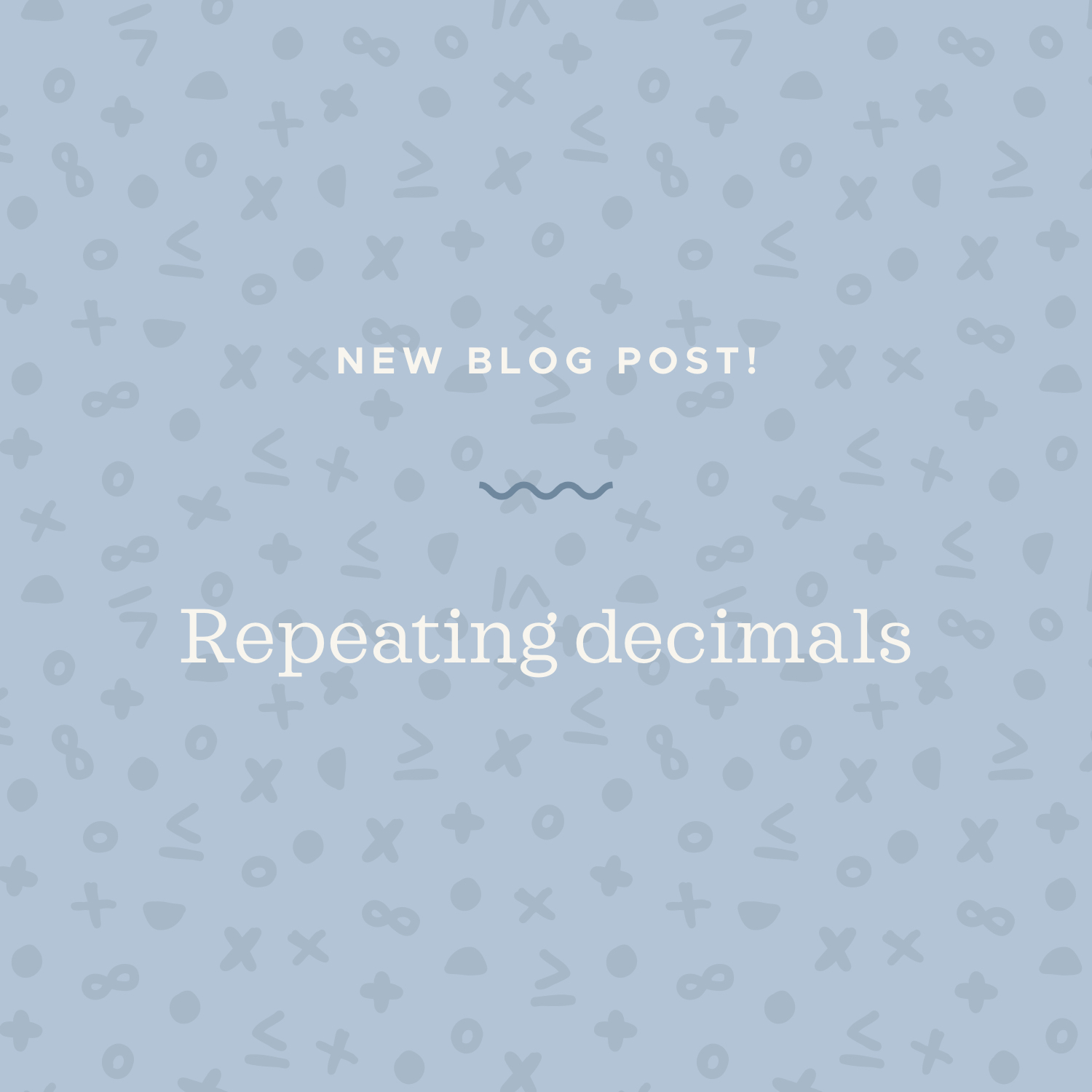How to simplify repeating decimal numbers
Finite decimal numbers vs. infinite decimal numbers
Up to now, we’ve been dealing with only finite decimal numbers (numbers with a finite number of decimal places). For example, ???32.18476??? is a finite decimal number, because it ends at the ???6???.
In contrast, there are two kinds of decimal numbers that go on forever and ever. Some decimals that go on forever eventually get to a point where a certain digit (or sequence of digits) repeats infinitely, but some decimal number that go on forever don’t repeat.
Hi! I'm krista.
I create online courses to help you rock your math class. Read more.
A decimal number where a digit or sequence of digits repeats infinitely is called a repeating decimal. An example is
???32.184766666666...???
The ... means that the ???6??? repeats forever. We can rewrite a repeating decimal in compact form by writing the repeating digit/sequence just once and putting a bar over it. For example, we can write ???32.184766666666...??? as
???32.1847\overline{6}???
An example of the other kind of infinite decimal is ???\pi???, whose decimal representation goes on forever but never repeats. Here are the first ???46??? digits of ???\pi???.
???3.141592653589793238462643383279502884197169399???
What we want to focus on are decimals that go on forever but eventually repeat. We’ll set these non-repeating decimals like ???\pi??? aside for now.
How to rewrite a repeating decimal by putting a line over the repeating portion
Take the course
Want to learn more about Pre-Algebra? I have a step-by-step course for that. :)
Repeating decimal example
Example
Rewrite the repeating decimal.
???0.5454545454...???
What we have in this decimal number is a two-digit sequence, ???54???, that repeats over and over. Therefore ???0.5454545454...??? can be rewritten as
???0.\overline{54}???
Excerpt






